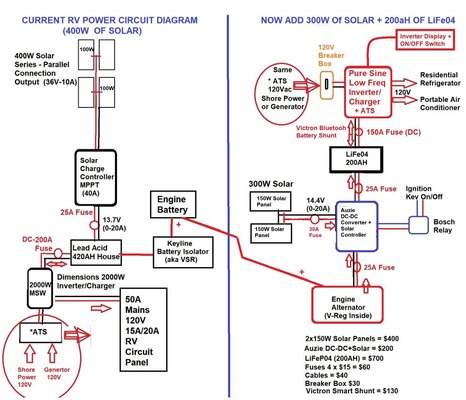JayArr
Well-known member
would a 2500W HF inverter last longer than and 2500W LF inverter?
No, both the same.
Does the LF run hotter than the HF inverter? I assume it does.
No. If they are both the same efficiency then the heat they produce will be the same.
And are you "in the danger zone" with a HF inverter running 80+% of the rated power for long periods of time... due to heat?
80% = no, 90% = i'd say yes. BUT That goes for a HF or a LF, 50%-65% id a better target
what's attractive are those hybrid HF Inverter/Chargers since all the necessary functions (and internal relay power switching) is inside. Or do you thing buying separates are more reliable and easier to diagnose
I like the Inverter/Chargers, they use the same circuitry for both by reversing the way the transistors pass current so you end up with very powerful, very high current chargers that get to take advantage of the on board CPU. The Xantrex Prosine 3.0K has a 120A charging capability.
Putting separates together can be fun if you're doing a DIY project on your trailer on the weekend but for Pros, time is money, so a box that already has a transfer switch and a charger built in simplifies install by an hour or two plus the savings in wire, terminals etc.
since there are so many PSW inverters on the market under $1,000 I'm more likely willing to sacrifice brand vs. Amazon sourced China made PSW inverter models.
There are also a lot of liars on Amazon. Make sure you read everything very carefully. Sine wave. modified sine wave and pure sine wave are different. It's togh to make a PSW with a LF inverter so a lot of the El-Cheapo models my not have a nice clean sine wave when you actually put a heavy load on them. The first day it arrives put a 65% load on it and look at the sine wave with an oscilloscope. Amazon is pretty good at returns so make sure what you buy is from Amazon itself and if it's from a company that just lists on Amazon read the return policy really carefully.
Remember the old adage - If it seems too good to be true it probably isn't.
I would consider a 2500W PSW LF Inverter/Charger for less than $1000 "too good to be true"
Caveat Emptor.

